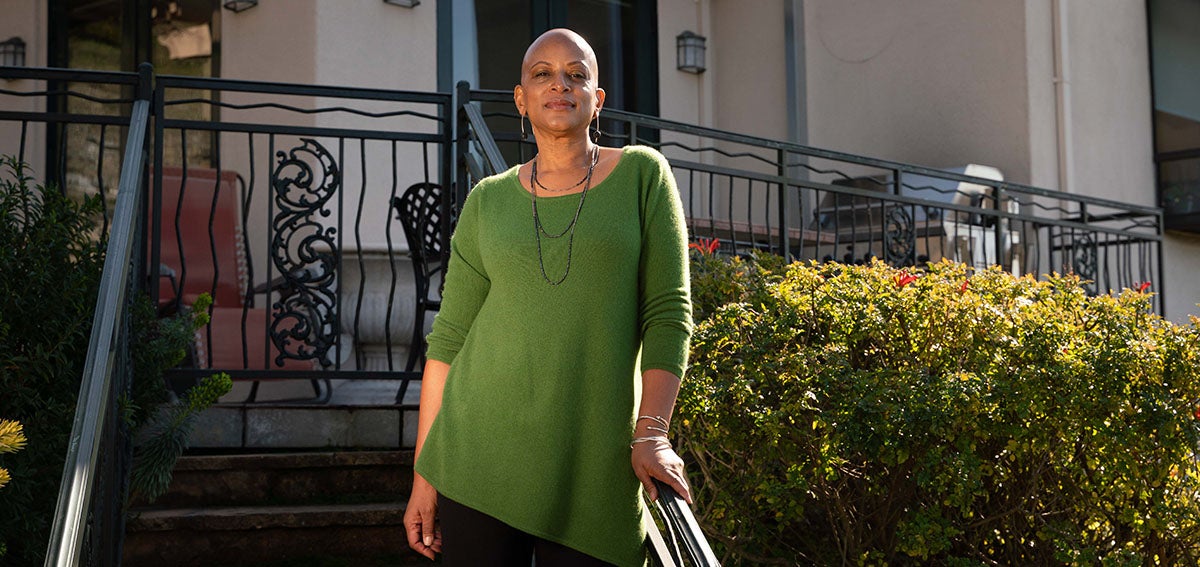
When I was a young doctor in residency training, I was summoned to the emergency room to evaluate a young Black man thought to have blood clots in both legs that could dislodge, travel to the lungs, and cause death. The other doctors suspected deep vein thrombosis because both his lower legs were swollen. I was wary of the preliminary diagnosis, because it would be unusual for an active young man to develop a clot and extremely unlikely for anyone to develop clots in both legs at once. When I examined the patient, who was the color of black coffee, I could see what the White doctors could not: His skin had red, quarter-sized bumps that were tender to the touch on both shins. This suggested an entirely different diagnosis that would not respond to the powerful and potentially dangerous intravenous blood thinners indicated for deep vein thrombosis.
As a Black person who grew up in a family with skin colors ranging from beige to ebony, I was familiar with what redness, bruising, and rashes look like on different shades of skin. But I am among the only 5% of physicians in America who are Black. Most physicians are unable to rely on lived experience to discern the way symptoms manifest on darker skin tones.
Medical training should have filled this gap. Instead, just as the entire country finds itself preoccupied with a long-overdue racial reckoning, so does medical education. Most medical specialties are debating the validity of using racial categories based on differences in skin color and hair texture to suggest biological meaning. In contrast, the specialty of dermatology — the diagnosis and treatment of skin, hair, and nail disorders — is being called upon to amplify these differences because not doing so has resulted in inequitable care for patients with pigmented skin.
In 2004, as it was becoming apparent that the majority of the US population would be non-White people within about 40 years, Susan C. Taylor, MD, a Black woman and dermatologist, established the Skin of Color Society, a professional dermatologic organization. Today, medical students are at the forefront in publicly questioning the centering of Whiteness in dermatology. Dermatology education in textbooks, medical journals, and the classroom have lacked images of skin findings on darker skin tones — with the exception of pictures featuring the rashes and ulcers of sexually transmitted diseases, which reinforce stereotypes of hypersexuality among Black people.
Medicine’s Long History of Structural Racism
This tragic reality is grounded in America’s long history of studying and experimenting on Black bodies in an attempt to prove that they were inherently different from White bodies and that this justified the enslavement and subjugation of Black people. In the disturbing autobiographical account Slave Life in Georgia: A Narrative of the Life of John Brown (1855), Brown described how blisters were applied to his hands, legs, and feet every two weeks for nine months to “ascertain how deep [his] Black skin went.” In a 1943 study of Black people with vitiligo (PDF), a disease in which patches of skin lose their color, pain stimuli were applied to pigmented and nonpigmented areas “on the presumption that the increased pigmentation of the Negro’s skin might account for the differences in the pain measurements.”
It is no small irony that in dermatology, where inherent differences do exist and do matter for diagnosis and treatment, they often are disregarded because the legacy of structural racism is powerful and ongoing. As the populations of the US and California increasingly are composed of people of color, it is critical for health care providers, policymakers, and thought leaders to understand that this issue has broad implications, because not all people with dark skin identify as Black, and not all Black people have dark skin.
California Dermatologists Gear Their Practices to People of Color
In California, two Black dermatologists have established and direct clinical practices in major institutions that specialize in serving patients with pigmented skin. Nada Elbuluk, MD, an associate professor of dermatology at the University of Southern California, and Jenna Lester, MD, an assistant professor of dermatology at UCSF, are fierce advocates for changing the reputation of dermatology and providing equitable care for patients with pigmented skin.
They were preceded by Taylor, who founded the first clinic of this kind in 1999. The Skin of Color Center at New York City’s St. Luke’s-Roosevelt Hospital (now Mount Sinai West) grew out of Taylor’s view that dermatology “lacked minority physicians and an emphasis on diseases that affected minority populations.” This is certainly still true today.
California patients are grateful. Elbuluk recalls several patients saying things like they “had given up” on getting help for their condition, had “worked hard to find me,” and felt “relief after establishing care.”
Although much of the national conversation about how to remedy this issue has focused on the need for more representation of pigmented skin in medical education and more dermatologists of color, the existing medical workforce is in dire need of attention too. Only about one-third of skin conditions are referred by primary care providers to dermatologists, and most dermatologists do not accept many patients covered by Medicaid plans. That means primary care providers, urgent care centers, emergency rooms, and hospitals have the first and only contact with many patients complaining about skin problems.

“We definitely have a public relations problem,” Lester said. “We need to change our image from people seeing dermatology as a luxury.” She was referring to the perception that primary care providers often consider dermatologic issues cosmetic and relegate them to a lower priority than “serious” comorbid conditions. “We need to show the skin as the window to fatal internal conditions,” she said. But if initial providers don’t know how conditions manifest differently on different skin tones, the consequences are delayed and cause missed diagnoses and worse outcomes for patients with darker skin tones.
How Mythology and Structural Racism Harm Patients
Racial stereotypes about who gets which diseases must also be addressed. For example, Elbuluk points out that many people, including providers, incorrectly assume that Black people don’t get skin cancers like melanoma. This can lead to late or missed diagnoses of those cancers. The risk of melanoma for Black people is thought to be roughly 20 times lower than for White people, but it is not zero, she says. The mythology surrounding this means that Black people tend to be diagnosed for skin cancer at more advanced stages, which results in worse outcomes. The survival rate five years after diagnosis is 90% for White patients with melanoma. The comparable survival rate for Black patients is 66%.
Lester recalls a Black patient whose primary care doctor misdiagnosed a melanoma skin growth as a keloid — a raised overgrowth of scar tissue that occurs at the site of a skin injury. While keloids more commonly develop in darker-skinned people, clinicians must consider other diagnoses. This misdiagnosis and mistreatment went on for months before a dermatologist was consulted, but it was too late to avert the patient’s preventable death.

Such mistakes do not have to be fatal to have tremendous impact on daily life, Elbuluk said. Dermatology is a uniquely visual medical specialty, not only in its reliance on understanding how various conditions appear on different skin types, but also from the patient’s perspective. Dermatologic conditions are often hard to hide. The world can see them, causing significant negative psychological and social impact for patients.
“There needs to be a baseline cultural competency,” Elbuluk said, adding that clinical competency in recognizing findings on darker skin isn’t sufficient. For providers, lack of awareness about grooming practices and preferences outside a White-centered norm can harm patients.
For example, assuming that a Black woman with straight hair has used a “relaxer” to chemically straighten the hair, as opposed to using heated appliances, or recommending that a Black woman with kinky hair use a corticosteroid shampoo several times a week to treat dandruff, as may be usual care for naturally straight and more oil-producing hair, would result in patients leaving the exam room feeling unheard and unseen, Elbuluk said.
A Preventable Loss
One such patient is Hilary Alexis.
Alexis, a resident of Oakland, was in her forties when she noticed her hairline receding. She told her primary care doctor, an White man around her age who was himself experiencing male-pattern baldness. He didn’t think Alexis’ hair loss was cause for concern. He sent her to the lab to check her B vitamins and thyroid function. When those results came back within normal limits, she said, the doctor shrugged. In subsequent visits, she repeatedly raised the issue of her hair loss, and he said, “I don’t know.”
The doctor never suggested a dermatology referral. Years later she consulted two dermatologists. By then, however, her undiagnosed condition had passed the point of no return. Alexis was essentially doing a comb-over with artificial two-strand braids (twists) to cover her retreating hairline.
“I had a full-on Barnum and Bailey clown hairline,” she said. “The fake twists were just another form of clownishness.”
The first dermatologist prescribed a cream, but believed hair plugs were the only viable solution. The second dermatologist biopsied Alexis’ hair follicles and diagnosed her with alopecia areata, an autoimmune disorder that causes patchy hair loss, and prescribed steroid injections. After a number of injections and no signs of improvement, she discontinued them.
Finally, six years ago, Alexis shaved her head for the first time. That was long before Massachusetts Congresswoman Ayanna Pressley publicly “came out” about her alopecia, making it easier for other Black women to overcome the stigma of being bald.
“I definitely had to adjust to my new look and the reality of permanent loss,” Alexis said. “Initially, I had trepidation about awkward initial moments when people I know saw me the first time as a bald woman.”
Like Pressley, however, Alexis was surprised by an overwhelmingly positive reception. And while Alexis sees herself as a proud, unapologetic, self-defining Black woman, “I sometimes wish I had hair on my head and eyebrows,” she said. “I don’t think it would have been dismissed by a Black doctor.”
Learning to Care for Patients with Pigmented Skin
Elbuluk and Lester encourage providers in primary care clinics, urgent care centers, emergency rooms, and hospitals to educate themselves about the variety of ways that dermatologic conditions appear on different shades of skin and types of hair. Primary care providers should not think that lists of clinical do’s and don’ts could ever account for all of California’s vast diversity of culture and skin tones.
Providers must learn to find out what patients’ preferences and practices are, as well as ask dermatology colleagues for timely advice about examining conditions that could change the length and quality of their patients’ lives.
Finally, dermatology providers should add another layer of visibility to their field: They should increase their own visibility by going to primary care provider practices to teach about caring for patients with pigmented skin, and they should preemptively see patients in their own practices before conditions advance. This could be a public relations campaign that benefits everyone.
Authors & Contributors

Vanessa Grubbs
Vanessa Grubbs, MD, is a board-certified nephrologist and internist, as well as founder and president of Black Doc Village, a nonprofit organization focused on expanding the Black physician workforce. She is the author of Hundreds of Interlaced Fingers: A Kidney Doctor’s Search for the Perfect Match. Grubbs received her medical degree from Duke University and specialty training in kidney diseases at UCSF. She is an alum of the CHCF Health Care Leadership Program.
She lives in Oakland, and her personal website is thenephrologist.com.

Sarahbeth Maney
Sarahbeth Maney, also known as SB, is a photojournalist originally from the Bay Area. Her personal work focuses on education, disability, and issues that disproportionately affect communities of color. SB received a grant from the Pulitzer Center to continue documenting a story about pregnancy and housing inequality during the coronavirus pandemic. She currently covers politics at the New York Times Washington bureau as a 2021–22 photography fellow.

Harrison Hill
Harrison Hill is a documentary photographer and filmmaker based in Los Angeles, California. His work focuses on social justice issues centered around communities of color in the US.
